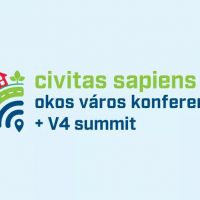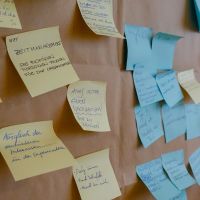A report on CESCI’s study tour to Salzburg in 2021
Knowledge sharing | 30 September 2021
Knowledge sharing | 30 September 2021
The Central European Service for Cross-border Initiatives organised a study tour for its members to Salzburg and its neighbouring cities between the 23 and 25 September 2021, with the aim of presenting good practices from abroad and expanding the professional contact network. Nine members of the association took part in this year’s three-day long field trip, together with three members of CESCI’s work organization. The study tour allowed the participants to explore a border region that is a prime example of cross-border cooperation in the fields of environmental protection, culture and tourism. During the professional part of the study visit, the participants had the opportunity to learn about local INTERREG projects implemented between 2014 and 2020 and to visit the border towns of Salzburg, Laufen, Oberndorf and Freilassing. In addition, informal discussions with the mayors of the towns on both sides of the border served as an opportunity to directly exchange experiences, learn about good practices and ask questions. Besides giving participants the opportunity to grow professionally, the study tour also enabled networking and deepened existing ties between the members of the association and the host partners.
On the first day, the mayors of Laufen (Hans Feil) and Oberndorf (Georg Djundja) hosted the members of the association at the town hall in Oberndorf. The hosts provided an overview of the shared history of the two towns as well as an insight into the relevant Austrian-German small-scale projects. Of the ongoing projects in the Euroregion, they highlighted the cycling project involving Laufen and Oberndorf, which aims to rationalise and promote everyday cycling. In addition, a number of other small projects have already been implemented, mostly to support the organization of cultural programmes, to promote investment or to improve the quality of life in the city centre.
It was pointed out that both cities manage projects as lead partners, therefore they regularly swap the leadership role. They consider the construction of the Europasteg, which was opened to the public in 2006, to be the biggest project, which further connected the Austrian and Bavarian towns. Mobility is enhanced by a bus service operating between the two towns, allowing cross-border public transport for up to 9 people. Participants showed great interest in the process of developing cross-border projects in the area. The mayors confirmed that projects are mostly set up to address emerging problems and are coordinated by a two-person working group. The two mayors consult each other on a monthly basis at least, and the members of the two governing bodies meet on an annual basis, thus ensuring regular contact.
Following the meeting with the mayors, the first day of the study tour was concluded with an informal sightseeing tour involving the attractions of Oberndorf on the right bank of the Salzach River and a group dinner.
The Interreg Austria-Bavaria programme includes small-scale projects with a grant not exceeding EUR 25 000, and which have at least one long-term project partner on both the German and Austrian sides. Investment measures, however, are eligible for funding up to a maximum of 30% of the project costs submitted, and the basic application requirements (eligibility rules, selection criteria) are also in line with the requirements for larger projects. However, unlike large-scale projects, a simplified procedure applies to small-scale projects, which are authorized by three regional supervisory boards (Regionaler Lenkungsausschuss West, RL Mitte and RL Ost). The main contact for small projects are the Euroregions within the programme area.
The second day was dedicated to further learning about the INTERREG projects implemented in the region during the 2014-2020 programming period. The CESCI members were received by the Salzburg Research Institute, an Austrian partner and research centre. The first presentation outlining the institute’s operation and tasks was given by Dr. Veronika Hornung-Prähauser, an expert researching the field of innovation management. She described the Austrian-German and Austrian-Italian Interreg projects relevant to the region, starting with the Labs.4.SMEs project, which was funded under the INTERREG Austria-Italy programme. The project has set up innovation labs to support small businesses, providing training, support and a suitable environment for the development of ideas and products. She referred to the SWAIG project as a successful element of the initiative, and which diversified cross-border innovation solutions by developing a therapeutic thermal cylinder. They also try to pool existing knowledge through brain storming and involve other companies.
This was followed by a presentation on the creation of quality tourism and the mitigation of the disadvantages of mass tourism by Dr. Markus Lassing, who works in fields such as market analysis, business model development, social media and trend research. Planning tourism capacity and a proportionate distribution (both in time and space) of visitors arriving in the region is a necessity for popular destinations such as the Salzburg region. To this end, the number of tourists should be continuously monitored (including the use of mobile phone data) in order to avoid disagreements between locals and visitors and excessive environmental pressure. Dr. Lassing sees a solution in the use of so-called nudges, which try to influence the inner motivation of tourists rather than imposing bans, thus creating a win-win situation for locals and visitors alike. One such tool could be the development of pricing concepts that set different prices based on busy time periods and locations, thus “steering” tourists to the cheaper and less crowded destinations. The development of the MA project was suspended during the pandemic and its duration was extended.
“A nudge […] is any aspect of the choice architecture that alters people’s behavior in a predictable way without forbidding any options or significantly changing their economic incentives. To count as a mere nudge, the intervention must be easy and cheap to avoid. Nudges are not mandates. Putting fruit at eye level counts as a nudge. Banning junk food does not.” [Thaler, Richard, and Cass Sunstein (2008)]
Finally, Dr. Siegfried Reich, the director of the institute, summarised the process of implementing the findings of research carried out at the institute and he also outlined the structure of the institute. He explained the importance of the Science City, also home to the institute, and which houses research centres in several scientific fields (from chemistry to geoinformatics) and has enabled the development of a concentrated scientific hub in the region. The institute is run by the Province of Salzburg, through a political (Supervisory Board) and a scientific (Expert Council) body. The research centre’s tasks include collecting and analysing the digital footprints people leave behind, which will serve as a basis for the development of future innovations such as self-driving buses or smart devices promoting a healthy lifestyle and regular exercises.
After spending the morning in Salzburg, the study tour continued in Laufen, where the CESCI team was invited to take part in a guided tour, thanks to the local mayor. Led by an experienced tour guide, the team gained a better insight into the history of the city, the changes in border permeability and border regimes. At the end of the day, our association was invited to a dinner at the Euregio Salzburg-Berchtesgadener centre (in Freilassing), where the participants of the study tour were hosted by the Vice-President of the Euroregion (Norbert Meindl). The dinner provided an opportunity for a relaxed discussion with the Vice-President of the Euroregion, allowing the group to learn more about the region’s tourism services and the functioning of the Euroregion.
On the closing day, members enjoyed the programmes of Salzburger Rupertikirtag, one of Salzburg’s biggest festivals. The fair atmosphere and relaxed sightseeing were a fitting conclusion to the three-day study tour. After reflecting on the experience gained during the tour, which was both professionally diverse and also included informal programmes, CESCI remains committed to organising further study tours for its members in the future, thus supporting them to gain experience in different border regions and also contributing to the establishment of new partnerships.

 A local support group has been set up for the joint management organization...
A local support group has been set up for the joint management organization...